Layers of sponge filled with sweet ricotta and almond marzipan make Cassata Siciliana a true Sicilian classic known for its rich flavour, vibrant colour, and timeless craftsmanship.
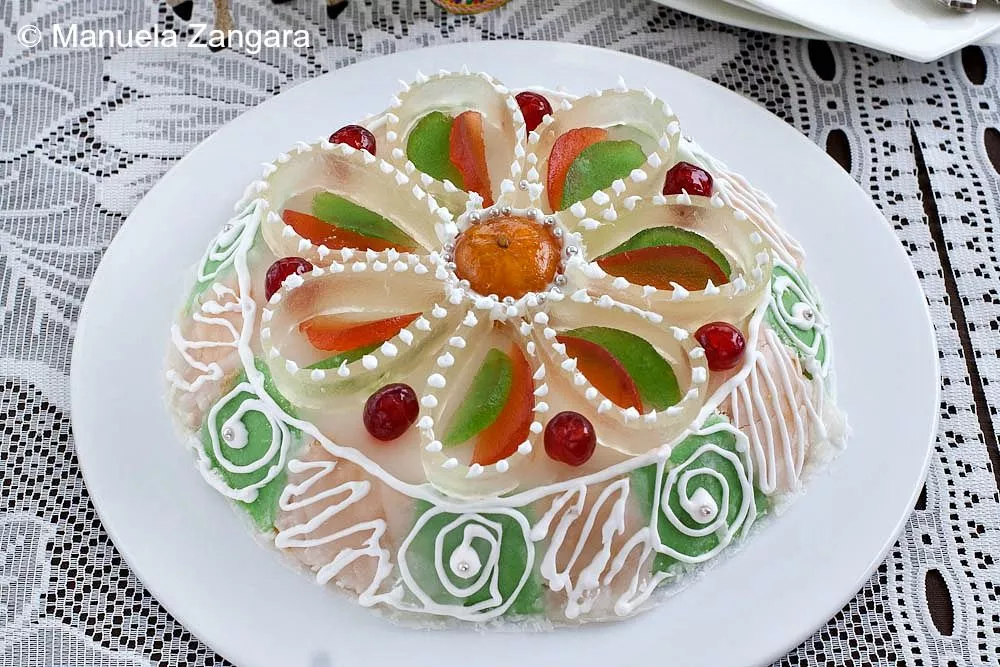
Easter in our family wouldn’t feel complete without Cassata Siciliana. This classic Sicilian cake combines soft sponge, sweet ricotta, and bits of chocolate, all covered with a smooth glaze and colourful candied fruit.
It’s the cake that has always brought everyone to the table. We often made it for Easter or Christmas when we were in Sicily with our relatives, and it quickly became part of every celebration. My nonno absolutely loved it and often asked my parents to make it for him.
I’ve kept the tradition alive with the same family recipe, and each time I prepare it, it fills our home with that same feeling of joy and togetherness that I remember so well.
What Is Cassata Siciliana?
Cassata Siciliana is one of the most traditional and iconic Sicilian desserts. It is made with layers of sponge cake, sweet ricotta cream, candied fruit, and marzipan. The cake is often finished with a glossy white sugar glaze (glassa fondente) and decorated with colorful candied fruits.
It is a very ancient cake and has been shaped by the many cultures that have ruled Sicily over the centuries. You can clearly see the Arab influence in ingredients such as almonds and citrus, while the Spanish brought both chocolate (from Latin America) and sponge cake, which in Italian is called Pan di Spagna or “Spanish Bread.”
When it was first created, cassata was simply a baked ricotta cake made with pastry dough. The use of marzipan came later, after 1100, when the nuns of the Martorana Convent in Palermo began producing marzipan, known in Sicily as martorana. Its ornate decoration also reflects the baroque style that became so popular in Sicily during the 1600s.
As for its name, some say it comes from the Arabic word qas’at, meaning basin or bowl, referring to the mould in which it is prepared. Others believe it comes from the Latin word caseum, meaning cheese, because of the sweet ricotta filling that makes this dessert so unique.

Why Everyone Enjoys a Slice of Cassata Siciliana
- Handmade candied fruit turns the dessert into a celebration of craftsmanship.
- Versatility allows endless flavour twists such as chocolate, citrus, or baked versions.
- Sweet ricotta filling gives a creamy contrast to the soft sponge and glossy glaze.
Key Ingredients for Cassata Siciliana
Ricotta
Traditionally made with sheep’s milk ricotta for its rich texture and mild sweetness. It’s mixed with sugar and chocolate chips to create a smooth and creamy filling.
Sponge Cake (Pan di Spagna)
Light and airy sponge forms the base and top layers of the cassata. It absorbs the rum syrup and gives structure to the cake without becoming dense.
Marzipan
Adds a soft, nutty flavour and bright green colour. It also supports the outer shape of the cassata and creates a striking contrast with the white glaze.
Candied Fruit and Glassa Fondente
Candied cherries, pears, and citrus slices create the cassata’s signature festive look. The white sugar glaze, or glassa fondente, adds a smooth, glossy finish.
Find the complete list with measurements in the recipe card below.
How to Make Cassata Siciliana
Make the Base and Filling
Step 1: Bake your sponge cake a couple of days before assembling the cassata. It needs to be slightly stale so it holds its shape.
Step 2: You can find the Sponge Cake recipe I used in my Mimosa Cake recipe.
Step 3: Prepare the ricotta filling as in my Sicilian Cannoli recipe.
Step 4: On the day you plan to assemble the cassata, make the rum syrup and marzipan.
Step 5: To make the rum syrup, mix the water and sugar in a small pot and place it over medium heat. When it starts to boil, turn off the heat, add the rum, and let it cool completely.
Step 6: To make the marzipan, mix all the ingredients together in a bowl and add a little cold water (about 1 tablespoon at a time, as you won’t need much). Mix well and knead until you get a smooth dough. Keep it wrapped in plastic wrap until you’re ready to use it.
Assemble the Cassata
Step 1: Line the cassata mould with plastic wrap (this will make it easier to unmould later).
Step 2: Cut one sponge cake disc to fit the base of the mould. Roll out the marzipan and cut it into seven trapezoid pieces of equal size. Use these as templates to cut seven sponge cake pieces of the same shape.
Step 3: Arrange the seven marzipan and seven sponge cake pieces alternately along the sides of the mould (as shown in the photo below).
Step 4: Brush a small amount of rum syrup over the sponge cake base and sides (do not use too much or the cassata may tear, you only need a thin layer to soften it).
Step 5: Fill the mould generously with the sweet ricotta and chocolate cream. Cover with the remaining sponge cake disc and press it down gently to level. Smooth the sides if needed, then cover completely with plastic wrap. Place a flat plate on top to act as a weight (the cassata needs to be pressed), and refrigerate overnight.
Glaze and Decorate
Step 1: The next day, unmould the cassata and prepare to decorate it.
Step 2: To make the glassa fondente, mix the icing sugar and a little water in a small pot. The glaze should be smooth, fluid, creamy, and still white.
If you add too much water, it won’t be thick enough to coat the sponge cake. If you add too little, it won’t spread evenly. Add water gradually (it’s easier to add than to remove). Once the consistency looks right, place the pot over low heat and bring it to a gentle simmer while stirring. When it starts to simmer, turn off the heat and pour it over the top of the cassata.
Step 3: The glaze sets quickly, so have everything ready and work fast. Let the excess glaze flow from the top to the sides and smooth it gently with a spatula (work from the sides only).
Note: The glassa fondente solidifies very quickly, so you must work fast once it’s ready. If the glaze is still fluid, you can spread it only on the sponge cake pieces and leave the marzipan uncovered for a brighter green finish.
Step 4: Refrigerate for about 1 hour, then decorate the top with pieces of candied fruit.
Step 5: For the final touch, make some Royal Icing (you can find the method in my How to Make Easy Royal Icing tutorial) and decorate the sides and top of the cassata using a piping cone made with baking paper.
Step 6: Add some silver cachous.
Step 7: Let it set completely before serving.
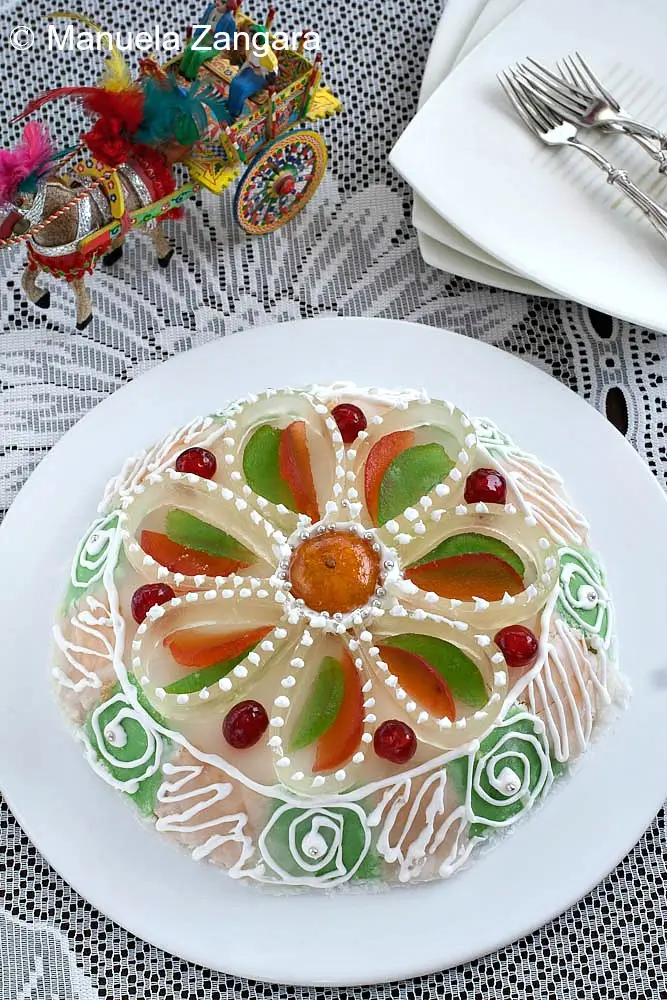
Frequently Asked Questions
Yes, but homemade Pan di Spagna has a lighter texture and absorbs the syrup more evenly. If you use a ready-made sponge, choose one that’s plain and not too sweet.
Use fine sugar and mix the ricotta until smooth, or let it rest in the fridge for about an hour so the sugar melts completely. This will help prevent the mixture from looking grainy.
A standard round cake tin of a similar size works well. Line it neatly with cling film to help lift the cassata out easily once it’s chilled.
Add water to the icing sugar slowly and stir constantly over low heat. The glaze should be thick enough to coat the back of a spoon but still flow evenly.
Extra Help from the Kitchen
Use Fine Sugar for the Ricotta Filling – Fine sugar blends smoothly into the ricotta and dissolves quickly. It creates a creamy texture and prevents extra liquid from forming later.
Drain the Ricotta Overnight – Place the ricotta in a sieve over a bowl, cover, and refrigerate. This removes excess liquid and gives a firm, creamy filling that won’t make the sponge soggy.
Chill the Bowl Before Whipping Ricotta – A cold bowl keeps the ricotta firm during mixing. The filling stays thick and easy to combine with sugar and chocolate chips.
Cut the Sponge with a Serrated Knife – Use a light sawing motion for clean slices. This keeps the sponge soft and even for neat layering.
Variations and Twists
Mini Cassatine – Create smaller, individual cassate using muffin moulds or ramekins. They make elegant single servings for parties or gifts and use the same filling and glaze as the classic version.
Cassata al Forno – Try the baked version filled with sweet ricotta and chocolate chips, wrapped in pastry instead of sponge. It’s less decorative but deeply traditional and rich in flavour.
Chocolate Cassata – Add cocoa powder to the sponge or pour melted chocolate over the glaze for a richer, modern variation that stays true to Sicilian roots.
Limoncello Cassata – Replace the rum syrup with limoncello syrup for a brighter citrus note that enhances the candied fruit.
Storage and Shelf Life
Store Cassata Siciliana in the fridge, covered with plastic wrap or kept in an airtight container to protect the glaze and marzipan. It stays fresh for up to 4–5 days.
You can freeze the sponge cake and the ricotta filling separately for up to 1 month. Defrost them overnight in the fridge before assembling the cake.
Once glazed and decorated, cassata should not be frozen as the marzipan and sugar glaze can lose their smooth texture after thawing.
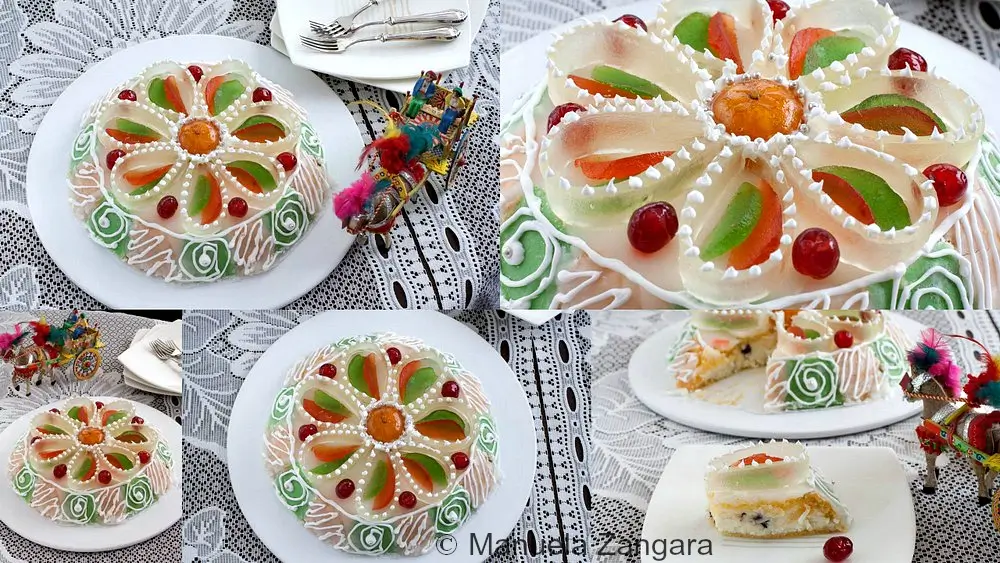

Cassata Siciliana
Layers of sponge filled with sweet ricotta and almond marzipan make Cassata Siciliana a true Sicilian classic known for its rich flavour, vibrant colour, and timeless craftsmanship.
Ingredients
Rum Syrup
- 40 g – 1.4 oz. water
- 35 g – 1.25 oz. sugar
- 40 g – 1.4 oz. rum – if your rum is about 40% alcohol
Marzipan
- 50 g – 1.75 oz. almond meal
- 50 g – 1.75 oz. icing sugar
- A few drops of almond extract
- Green liquid food colour
- A little water
Sweet Ricotta Filling
- 800 g – 1.75 lbs. ricotta*
- 480 g – 1 lb. sugar
- 70 g – 2.5 oz. dark chocolate chips
Assembling the Cassata
- 1 × 24 cm – 9.5 inch sponge cake – sliced horizontally into 3 discs
- 100 g – 3.5 oz. green marzipan
- Rum syrup
- Sweet ricotta filling
Decoration
- Glassa fondente made with 300 g – 10.5 oz. icing sugar and a little water
- Royal icing
- Candied fruits – cherries, red and green pears, half a mandarin, zuccata (Sicilian candied pumpkin)
- Silver cachous
Instructions
Make the Base and Filling
-
Bake your sponge cake a couple of days before assembling the cassata. It needs to be slightly stale so it holds its shape.
-
You can find the Sponge Cake recipe I used in my Mimosa Cake recipe.
-
Prepare the ricotta filling as in my Sicilian Cannoli recipe.
-
On the day you plan to assemble the cassata, make the rum syrup and marzipan.
-
To make the rum syrup, mix the water and sugar in a small pot and place it over medium heat. When it starts to boil, turn off the heat, add the rum, and let it cool completely.
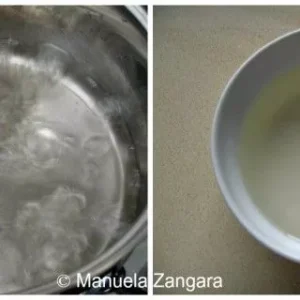
-
To make the marzipan, mix all the ingredients together in a bowl and add a little cold water (about 1 tablespoon at a time, as you won’t need much). Mix well and knead until you get a smooth dough. Keep it wrapped in plastic wrap until you’re ready to use it.
Assemble the Cassata
-
Line the cassata mould with plastic wrap (this will make it easier to unmould later).
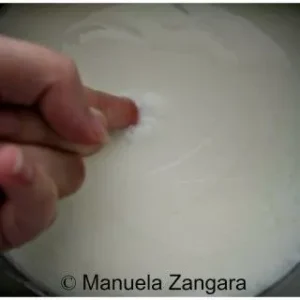
-
Cut one sponge cake disc to fit the base of the mould. Roll out the marzipan and cut it into seven trapezoid pieces of equal size. Use these as templates to cut seven sponge cake pieces of the same shape.
-
Arrange the seven marzipan and seven sponge cake pieces alternately along the sides of the mould (as shown in the photo below).
-
Brush a small amount of rum syrup over the sponge cake base and sides (do not use too much or the cassata may tear, you only need a thin layer to soften it).
-
Fill the mould generously with the sweet ricotta and chocolate cream. Cover with the remaining sponge cake disc and press it down gently to level. Smooth the sides if needed, then cover completely with plastic wrap. Place a flat plate on top to act as a weight (the cassata needs to be pressed), and refrigerate overnight.

Glaze and Decorate
-
The next day, unmould the cassata and prepare to decorate it.
-
To make the glassa fondente, mix the icing sugar and a little water in a small pot. The glaze should be smooth, fluid, creamy, and still white.
If you add too much water, it won’t be thick enough to coat the sponge cake. If you add too little, it won’t spread evenly. Add water gradually (it’s easier to add than to remove). Once the consistency looks right, place the pot over low heat and bring it to a gentle simmer while stirring. When it starts to simmer, turn off the heat and pour it over the top of the cassata.
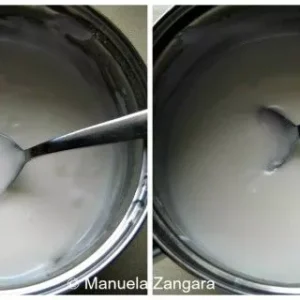
-
The glaze sets quickly, so have everything ready and work fast. Let the excess glaze flow from the top to the sides and smooth it gently with a spatula (work from the sides only).
Note: The glassa fondente solidifies very quickly, so you must work fast once it’s ready. If the glaze is still fluid, you can spread it only on the sponge cake pieces and leave the marzipan uncovered for a brighter green finish.
-
Refrigerate for about 1 hour, then decorate the top with pieces of candied fruit.
-
For the final touch, make some Royal Icing (you can find the method in my How to Make Easy Royal Icing tutorial) and decorate the sides and top of the cassata using a piping cone made with baking paper.
-
Add some silver cachous.
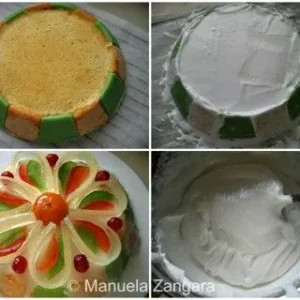
-
Let it set completely before serving.
Recipe Notes
*Cassata is traditionally made with sheep’s milk ricotta, but I couldn’t find it where I live, so I used regular ricotta instead. It still turned out smooth and creamy.





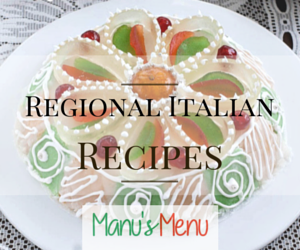


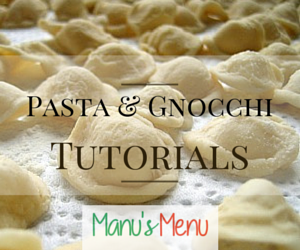

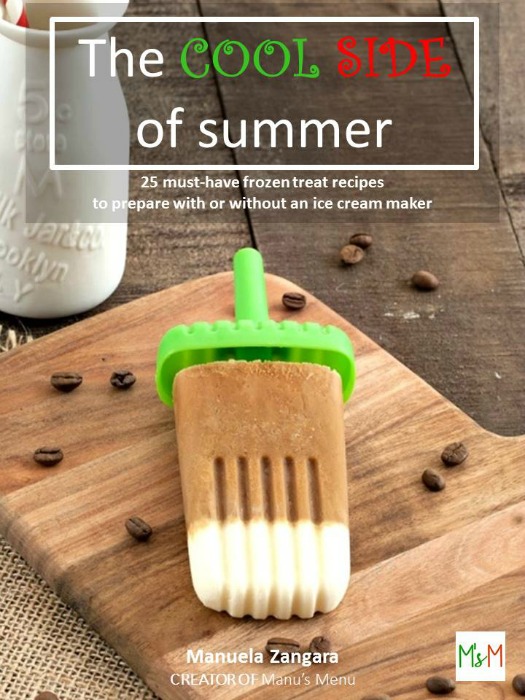







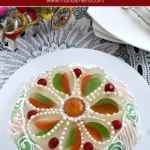
How beautiful and such a wonderful way to celebrate Easter. I’ve only ever had the frozen version of cassata. I look forward to trying this one myself.
Hi Manuela! This Cake is a Masterpiece!!! Load not only of sugar but also of History! Thanks for sharing it and Happy Easter to all! Buona Pasqua a tutti…e grazie!!! Daniela
I’m in love with your gorgeous cassata, Manu. You know I was there this January. Friends came to visit us from Palermo and they explained it was from the best bakery in Palermo. There was a huge discussion about what was wrong with it. It wasn’t as perfect as it usually is. I was totally content with every bite. I would love to try your recipe. sei troppo brava.xx
Your cassata is simply amazing! Beautiful, perfect.
Happy Easter, Manu! 🙂
That is one incredible looking cassata: I love the decoration… traditional yet with an original touch that differentiates it and makes it even more elegant and stunning than the cassatas you see here in the pastry stores.
This is MAGNIFICENT! Brava Manu!
Wow! That is so beautiful.
Manu, great cake! I was wondering where you bought the pan to form the cassata and where you get the candid fruit. I’ve tried making it myself but there seems to be something missing and doesn’t quite turn out the same.
Thank you,
Paul
You are truly an artiste!
where can I buy a Cassata pan?
I am not sure where you live… I got mine from Italy, but if you go to an Italian food store that also sells kitchenware, you may be able to find it. Or you could look online… I found this on Amazon.it http://www.amazon.it/s/ref=nb_sb_noss?__mk_it_IT=%C3%85M%C3%85%C5%BD%C3%95%C3%91&url=search-alias%3Dkitchen&field-keywords=cassata%20teglie
Hi 🙂 I’m just wondering how the neat little clearish gel petal shapes on top are made?
Hi Amanda. Those are slices of “zuccata” – candied pumpkin. 🙂